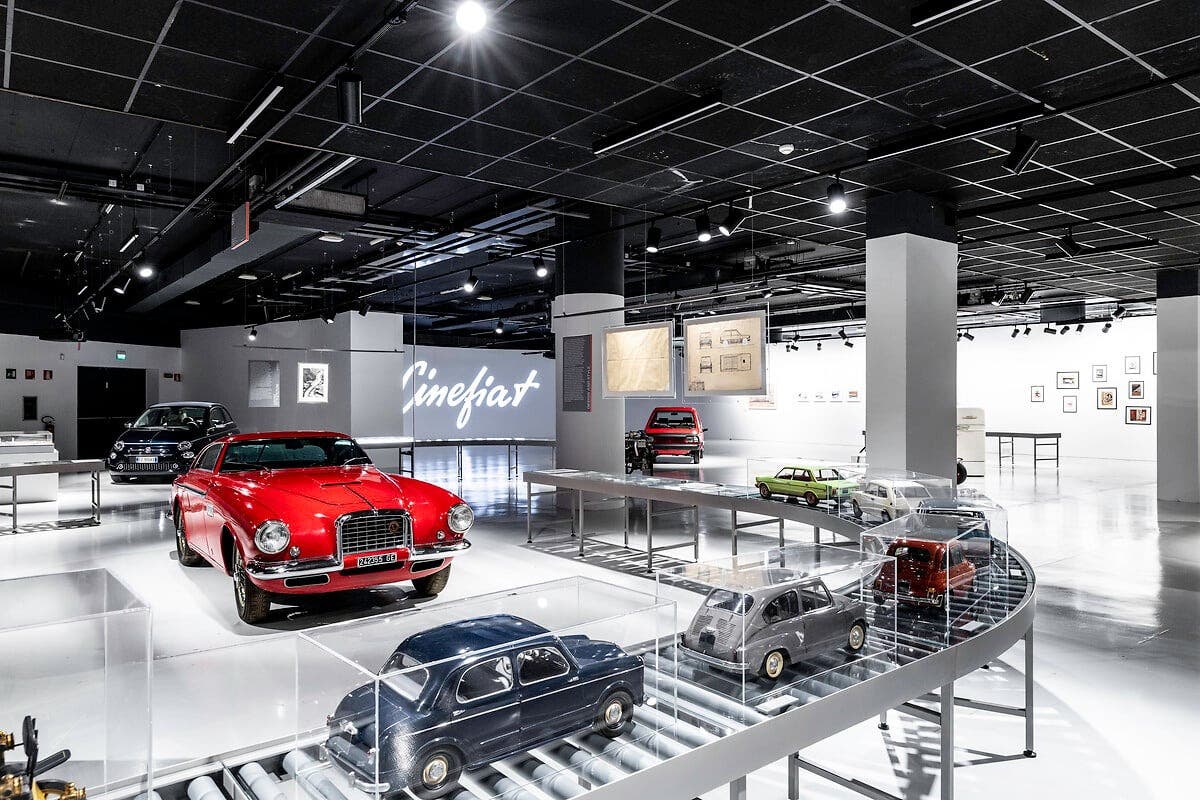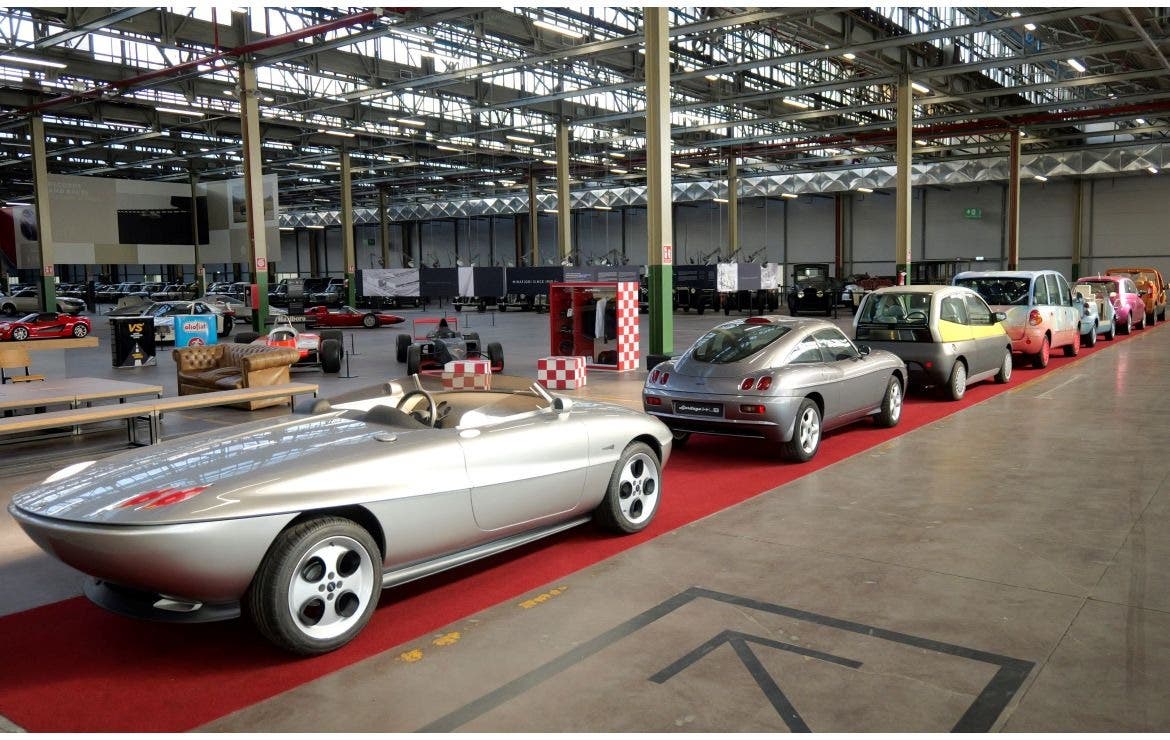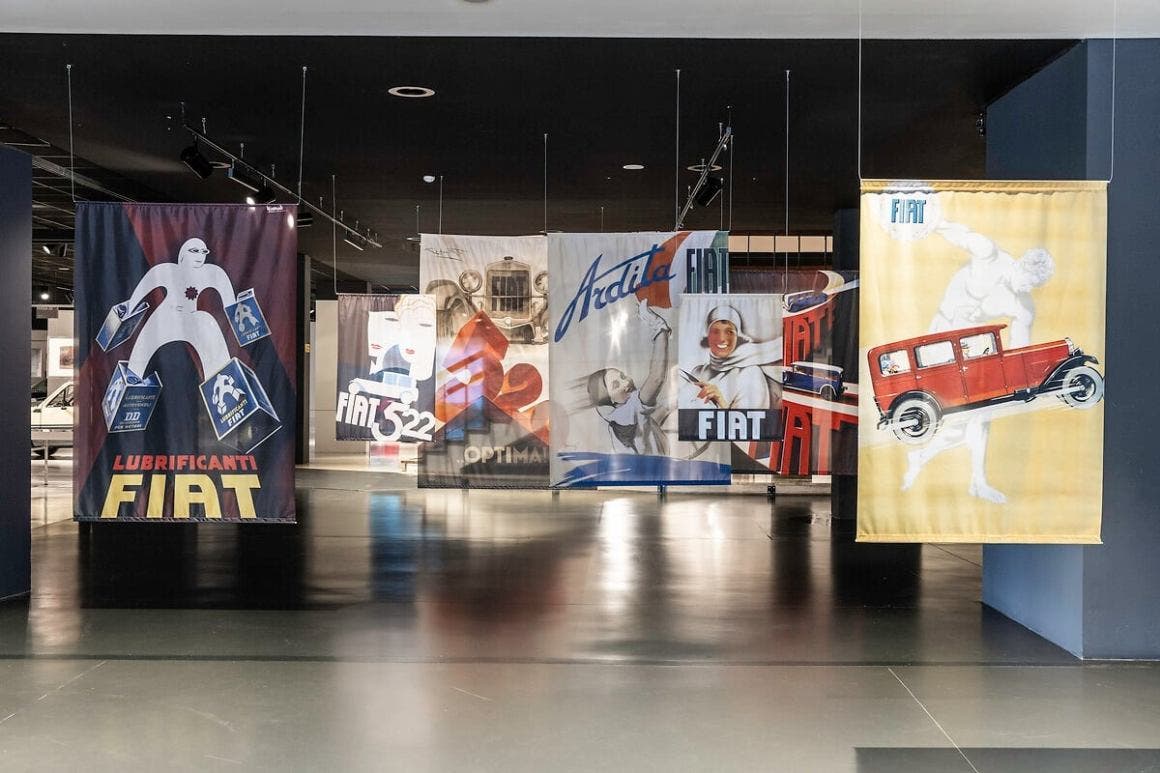Modernity through the Lens of FIAT Imagination,” which traces more than a century of the Turin-based brand’s history through its iconic vehicles, artwork and archival documents. Also, two exhibitions, “UNEXPECTED & SURPRISING FIAT” at the Heritage Hub and an exhibition of unpublished material at the FIAT History Center.
Fiat exhibition on the occasion of the 125th anniversary
On the occasion of the 125th Anniversary of the founding of FIAT, an exhibition and two spin-offs take place in three key locations in Italy’s first capital city, bringing to life the highlights of the company founded in 1899 as the Italian Automobile Factory Turin.
Until May 4, 2025, MAUTO – National Automobile Museum will host the exhibition “125 times FIAT. Modernity through the lens of the FIAT imagination.” Curated by Giuliano Sergio and produced in collaboration with the Centro Storico FIAT and Heritage HUB, the exhibition traces the history of the Turin-based automaker, offering a reinterpretation that focuses on its social impact and the artistic and visual heritage that resulted. FIAT was founded in 1899 and led the modernization of Italy through the industrial revolution and national unity. The exhibition “125 Times FIAT. Modernity through the Lens of FIAT Imagination” explores the deep connection between the company and the country’s cultural, industrial and economic development.”

The exhibition tells more than a century of history through art, film, design and more, highlighting the uniqueness of FIAT’s business model and its influence on Italian modernity. The project will showcase nine of the brand’s most iconic cars, including the 508 Balilla from 1932, the 500 A Topolino from 1936, the Panda 30 from 1982 and the Fiat 500e, the third generation of a timeless icon, produced at the Mirafiori plant in Turin , a symbol of Made in Italy in the world. is the best-selling electric city car in Italy and Europe.
On display along with the cars is a wide selection of artworks, souvenirs, archival documents and graphic, photographic and audiovisual materials, which will illustrate the company’s visual imagery through a narrative structured in 8 macro exhibition sections. The exhibition is complemented by a series of five meetings and debates, organized in collaboration with the University of Turin, focusing on the themes explored during the event.
Also highlighting Fiat’s less iconic cars

At the same time, the Heritage Hub is hosting the temporary exhibition “UNEXPECTED & SURPRISING FIAT” which consists of a veritable journey through the Turin automaker’s less famous cars. The exhibition shows the brand’s continuous evolution, which continues to surprise the public with its cutting-edge design, advanced technology and bold choices in its models. The event focuses on the brand’s three main themes: innovation, efficiency and fun. The exhibition highlights the moments when FIAT experimented with innovative and forward-thinking solutions, interpreting efficiency as optimization of resources, costs and space. In addition, the brand’s playful side is shown through attractively designed models with sporty performance. This is a unique opportunity to discover FIAT’s versatility and pioneering spirit over the decades.
From iconic models such as the 1920s Fiat 520 and the 1993 Fiat Scia concept car, which showed the brand’s ability to explore new technical and stylistic frontiers, to the 1995 Fiat Vanzic electric concept, which anticipated urban electric mobility. Equally iconic are the Fiat 500 “C” Giardiniera Legno, the versatile 600 Multipla, and the Steyr Puch Military Panda. These models embody the search for a balance between space, cost and practicality, adapting to commercial, civilian and military use. Also featured in the show are the sporty Uno Turbo Trofeo, the Panda Jolly, the 500 Barbie Edition, designed for lovers of style and pop culture, culminating with the exclusive Fiat Qubo Spiaggina. The exhibition will continue at the FIAT Historical Center with a display of unpublished material selected together with ISMEL (Institute for the Memory and Culture of Labor and Social Rights).

